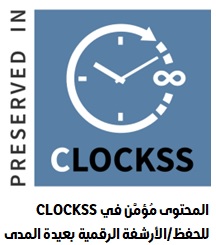استخدام أفضل البدائل وفق أسلوب التلطف لمعالجة مشكلات ثقافية في الترجمة
DOI:
https://doi.org/10.63939/AJTS.32fkjd22الكلمات المفتاحية:
بدائل الترجمة، أسلوب التلطف، مشكلات ثقافية، مشكلات الترجمةالملخص
هدفت هذه الدراسة إلى التطرق إلى معالجة مشكلة بعض العبارات والكلمات النمطية في الترجمة والتي لا تراعي أسلوب التلطف في اللغة الهدف، وفي سبيل ذلك استخدمت المنهج التحليلي النقدي لبعص النصوص، وترجمتها وتوفري بدائل للمترجم، بحيث يختار منها الأنسب والأليق وفق أسلوب التلطف بمراعاة مبادئ نظرية التهذيب، وقواعد المحادثة عند غرایس وقواعد المحادثة عند لیتش وجرى اختيار مجموعة من النصوص وتحليلها تحليلها تحليلًا نقديًا لاختيار المناسب لأسلوب التلطف. وتوصلت الدراسة إلى عدد من النتائج أبرزها أن الاختلاف الثقافي يستدعي استخدام أسلوب التلطف، لأن ما هو مألوف في ثقافة ما قد لا يكون مألوفًا في ثقافة أخرى، وحتى لا يقع المترجم في الأخطاء الثقافية في اللغة الهدف. ويتعين على المترجم فهم الدلالات الثقافية للعبارات لاستخدام أنسب عبارات التلطف في اللغة الهدف، بهدف تجنب استخدام الألفاظ الجارحة أو المحرجة أو غير اللائقة. ويتضح من تحليل النصوص نقديًا أنه يتوفر للمترجم بدائل يمكن استخدامها لتحقيق مبدأ التلطف. يساعد أسلوب التلطف على تحسين جودة الترجمة وجعلها أكثر احترافية. وختمت الدراسة بتقديم بعض التوصيات المرتبطة بالدراسية، أهمها مراعاة أفضل البدائل المتاحة في تحقيق مبدأ التلطف في الترجمة، ومن أجل استخدام أسلوب التلطف استخدامًا دقيقًا، يتعين دراسة ثقافتي اللغة المصدر واللغة الهدف.
التنزيلات
التنزيلات
منشور
إصدار
القسم
الرخصة

هذا العمل مرخص بموجب Creative Commons Attribution-NonCommercial 4.0 International License.
يتأطرُ نَشَاطَا النشر والتوزيع الخَاصَّيْنِ بمقالات المجلة برخصة المشاع الإبداعي اللاتجارية والحافظة للنسب CC BY-NC 4.0، والتي تنص على الآتي:
- لك كقارئ أو زائر مُطْلَقُ الحرية في:
- المشاركة: نسخ وتوزيع ونقل العمل لأي مكان أو تحويله لأي شكل.
- التعديل:المزج، التحويل، والإضافة على العمل.
لا يمكن لنا كجهة مُرَخِّصَة إلغاء هذه الصلاحيات طالما اتبعتَ شروط الرخصة.
- يتوجب عليك في المقابل احترام الشروط التالية:
- نَسب المُصنَّف (المقالة):يجب عليك نَسب العمل لصاحبه بطريقة مناسبة، وتوفير رابط للترخيص، وبيانُ إذا ما قد أُجريت أي تعديلات على العمل. يُمْكِنُكَ القيام بهذا بأي طريقة مناسبة، ولكن على ألا يتم ذلك بطريقة توحي بأن المُؤَلِّف أو المُرَخِّص مُؤَيِّد لك أو لعملك.
- غير تجاري:لا يمكنك استخدام هذا العمل لأغراض تجارية.
- منع القيود الإضافية: يجب عليك ألا تُطَبِّقَ أي شروط قانونية أو تدابير تكنولوجية تقيد الآخرين من ممارسة الصلاحيات التي تَسْمَحُ بها الرخصة.












